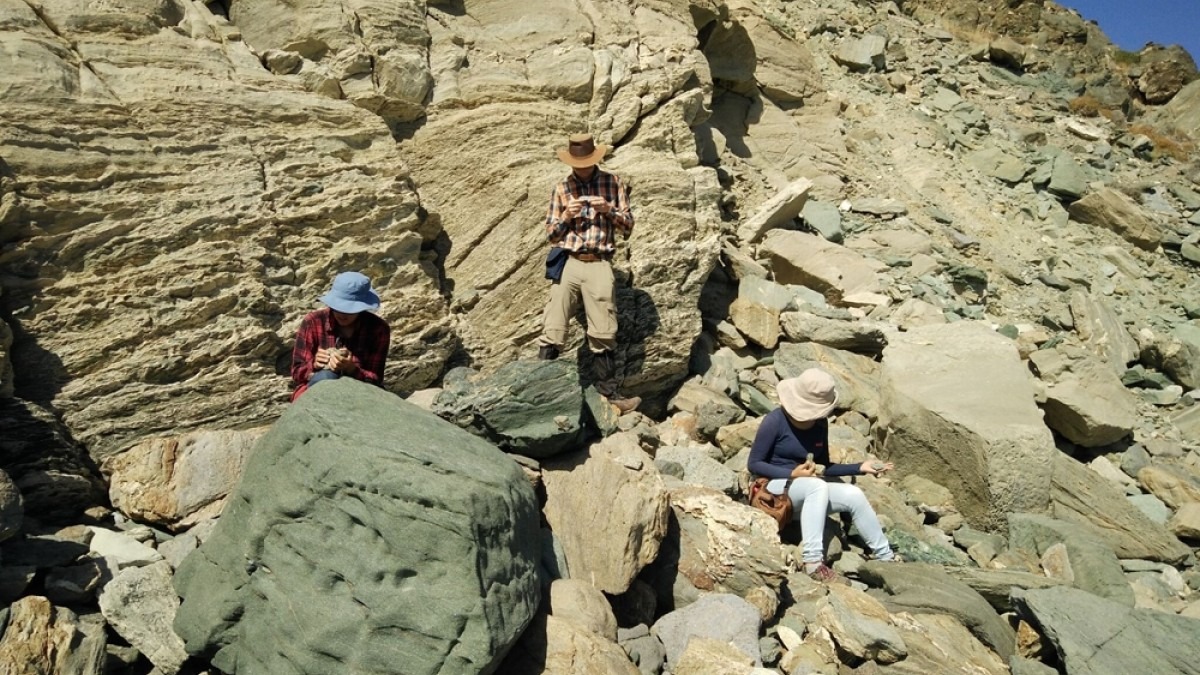A geologist’s paradise in the Greek Islands
When you think of Greece, you might picture a Mediterranean island paradise, with white-washed buildings, delicious seafood and rich local customs.
But there’s a part of Greece that doesn’t feature in the travel guides: its world-class metamorphic eclogite-blueschist terranes.
And that’s exactly why a group of six Masters students from the ANU Research School of Earth Sciences embarked on a three-week intensive geological field mapping course to the small Greek island of Sifnos.
The island, which is three hours from Athens, was very wealthy Island in ancient times, thanks to the mining of gold, silver and lead on the island as early as the third millennium BC.
These days, Sifnos is a mountainous island with fertile valleys, beautiful beaches and several towns, and home to the metamorphic eclogite-blueschist terranes that we were looking for.
Essentially, it’s a geologist’s idea of paradise!
There are several competing theories about the formation and tectonic history of Sifnos, so this field trip was our chance to try and solve some of these mysteries.
The landscape on Sifnos is perfect for geological mapping, with very few trees.
Accompanying us were our two supervisors, Dr Marnie Forster and Professor Gordon Lister. During the course, we developed our skills in field mapping, in a metamorphosed terrane with complex structural geology.
We worked in pairs and were assigned field areas to map.
There was an emphasis on working independently from our supervisors, and working through problems based off observations in the field.
There was no outline or lecture given for the region, but instead we were encouraged to come to our own initial observations on the various structures and geology. This was a steep learning curve for the first few days, however eventually we started to cover more and more ground and put some of the pieces of the puzzle together from the features we observed.
This approach allowed us to understand the tectonic history from what the rocks revealed, instead of making the rocks fit a particular model.
Our supervisors Gordon and Marnie periodically oversaw our mapping work, and visited difficult field areas with us, to help us understand the complex structural relationships. After three weeks, we were able to map a significant portion of the island.
On our rest days we toured sites of particular geological significance, including the famous metamorphic rocks of Vroulidia bay.
We even took a boat ride around the island to observe structural features only visible from the water. We also investigated ancient mining sites, some active during antiquity (and picked up a few interesting mineral samples along the way).
The course gave us many valuable experiences including the responsibilities of extended fieldwork without direct supervision, and the dynamics of working in a small team.
Above all, we saw some amazing geological features, on the beautiful island of Sifnos.








